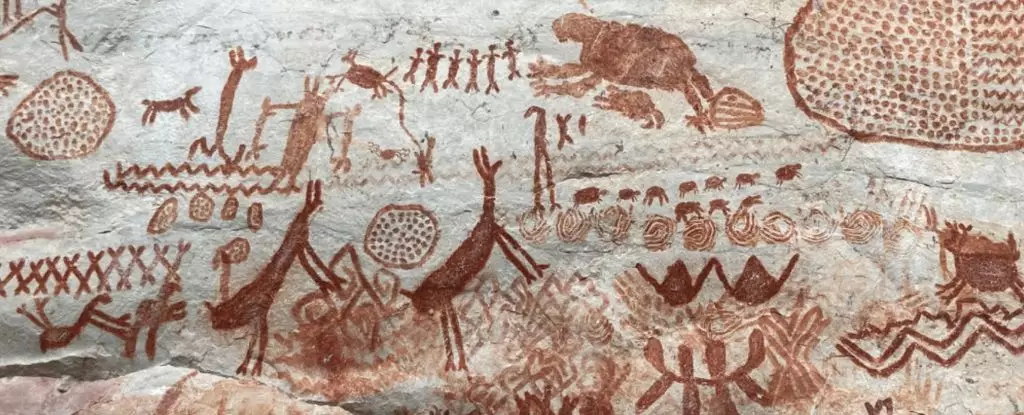In the heart of Serranía De La Lindosa, Colombia, a remarkable narrative unfolds through its rock art, a collection of motifs that embody the rich tapestry of beliefs held by the Indigenous peoples of the Amazon. Recent collaborative efforts between Colombian and UK researchers, along with Indigenous elders and ritual specialists, have brought to light the profound significance of these rock paintings. After a century marked by political turmoil and geographical challenges that hindered access, the rediscovery of tens of thousands of images across six sites sheds new light on ancient cosmologies that persistently weave through the lives of these communities.
Archaeologist Jamie Hampson from the University of Exeter notes the unprecedented alignment between Indigenous narratives and the depicted motifs in these galleries, stating, “I have worked with rock art and Indigenous groups on every continent – and never have we been fortunate enough to have such a direct fit between Indigenous testimony and specific rock art motifs.” This integration of Indigenous knowledge not only validates the imagery but provides context that enhances our understanding of these artistic expressions. The vivid ochre colors that adorn the rock surfaces immortalize not just the flora and fauna of the Amazon but also reflect spiritual engagements with the environment.
Through the eyes of the elders, these images serve as more than mere representations of daily life; they are a detailed account of ritualistic interactions with a metaphysical realm. The rock art depicts transformations of humans into animals and even hybrid forms, encapsulating the sacred connections between species. This ritualistic documentation implores viewers to rethink their perceptions of art as disjointed from spirituality.
The complexity of the Amazon’s ecosystem is mirrored in the intricacies of its inhabitants’ spiritual beliefs. As described by Tukano speaker Ismael Sierra, the painted figures – such as two-headed panther-lions – possess the qualities of the spiritual world. These beings are not merely fictitious but are integral to the Indigenous understanding of the universe, wherein shamans and animals share a metaphysical link. The jaguar, referred to in the Desana language, signifies both the majestic animal and the shaman, showcasing the duality of existence that defines these cultures’ perspectives.
This duality manifests through the practice of negotiating with the spirits that safeguard the wildlife. Successful hunts and the harvest of natural resources are seen as collaborative efforts with these ethereal protectors. The Indigenous peoples employ rock art to communicate their needs, painting animals on rock walls with red pigments alongside symbols that invoke requests for fertility and abundance. Such a practice is not merely artistic; it is a profound act of cultural expression that honors the same spirits that uphold their way of life.
Cultural Preservation and Ethical Responsibility
The collaboration between researchers and Indigenous elders serves not just as an academic exercise but as a necessary act of preservation. Hampson emphasizes the importance of this partnership, stating, “It enables us to understand that this is a sacred, ritualistic art, created within the framework of an animistic cosmology, in sacred places in the landscape.” With Indigenous peoples often dislocated from their ancestral lands due to socio-political upheaval and environmental degradation, the continuity of these sacred narratives is at stake.
The fear expressed by elder Ismael over the future of the paintings underscores a critical moral dilemma. After generations of tradition, who will protect and interpret these sacred sites amid contemporary challenges? The disconnection of Indigenous art from its rightful custodians puts not only historical records in jeopardy but also threatens the very essence of cultural identity.
The rock art of Serranía De La Lindosa serves as a portal to understanding the intricate relationship between Indigenous cultures and their environment. It is a testament to their enduring connections to the spiritual world, which informs their practices, beliefs, and identities. As contemporary society grapples with issues of cultural preservation, recognizing the value of Indigenous heritage and fostering collaborations is vital. Only through such commitments can we hope to protect these ancient narratives and sustain the legacies of the people who have long safeguarded the Amazon’s wisdom.


Leave a Reply